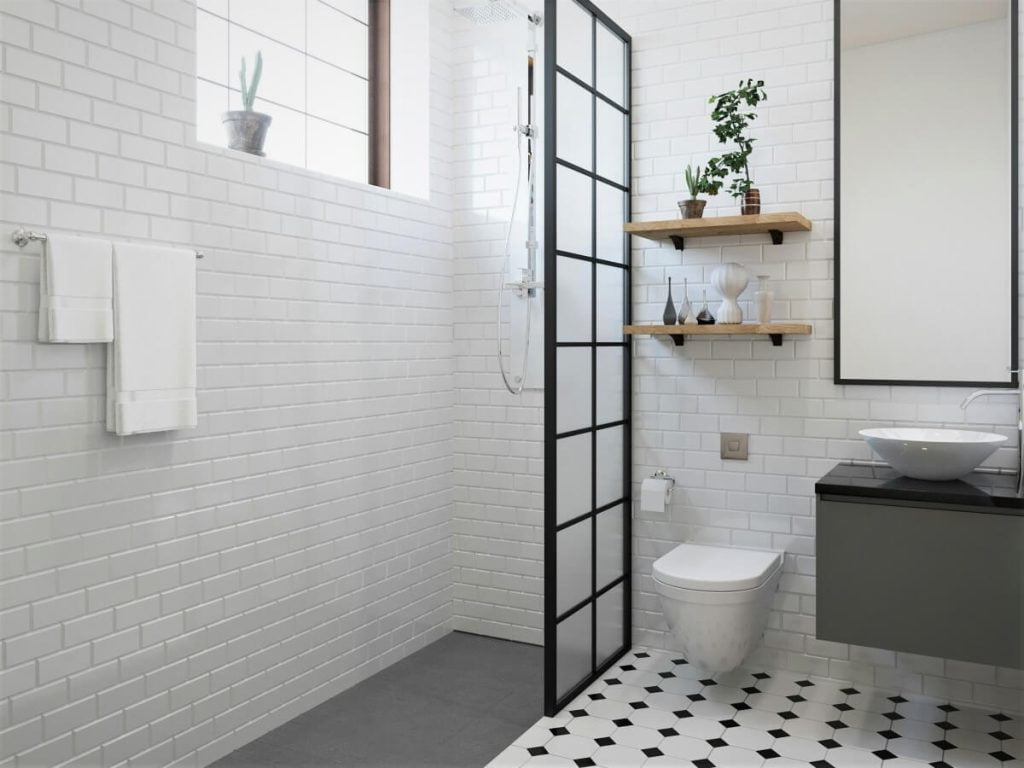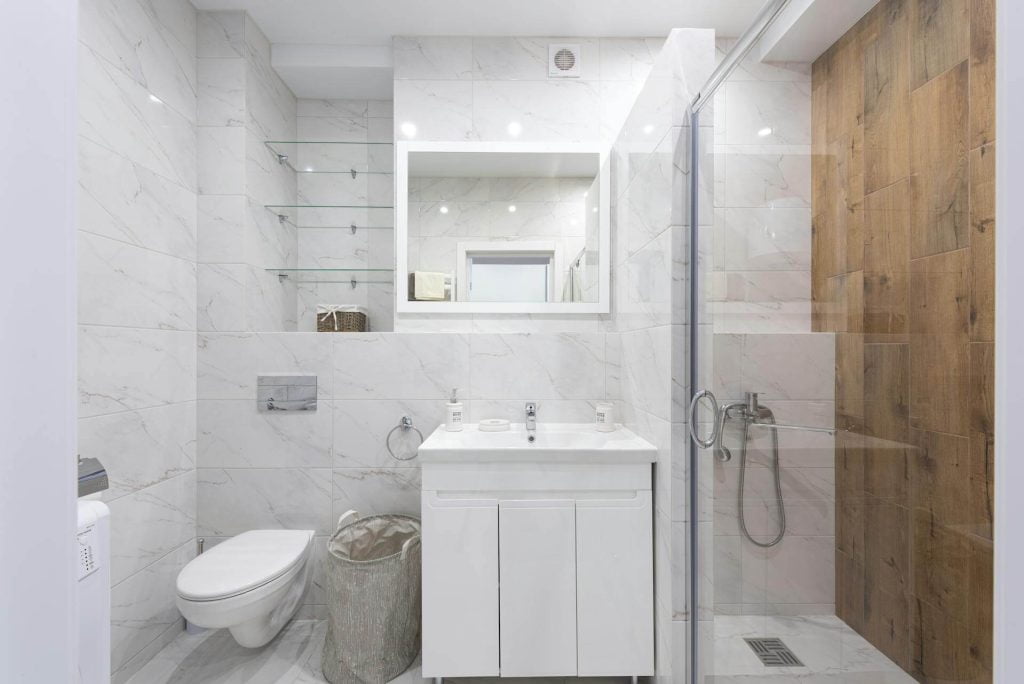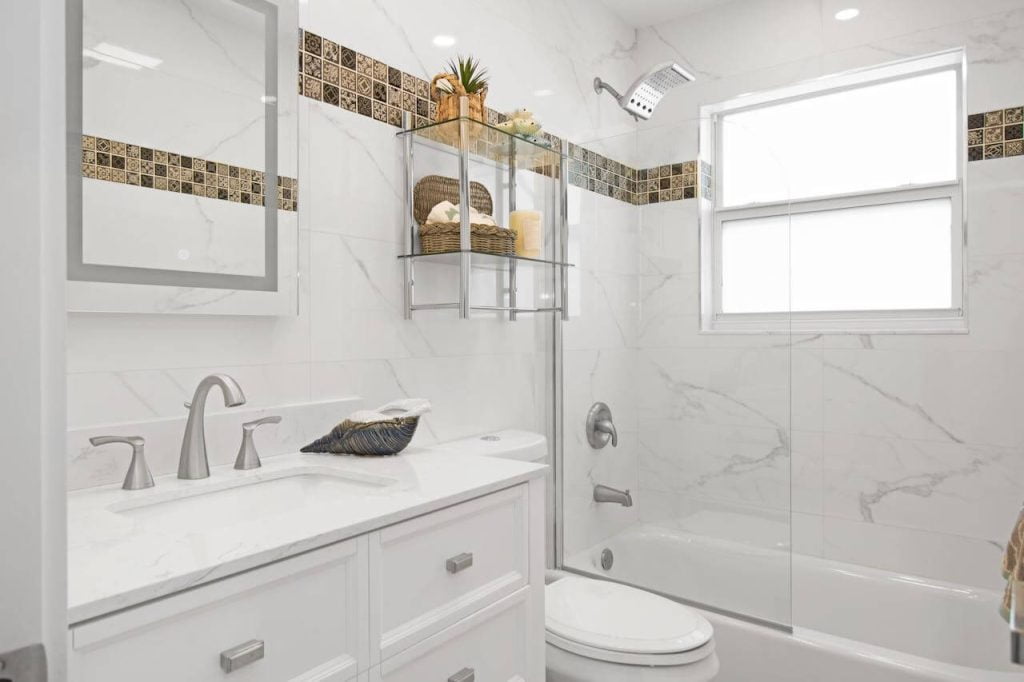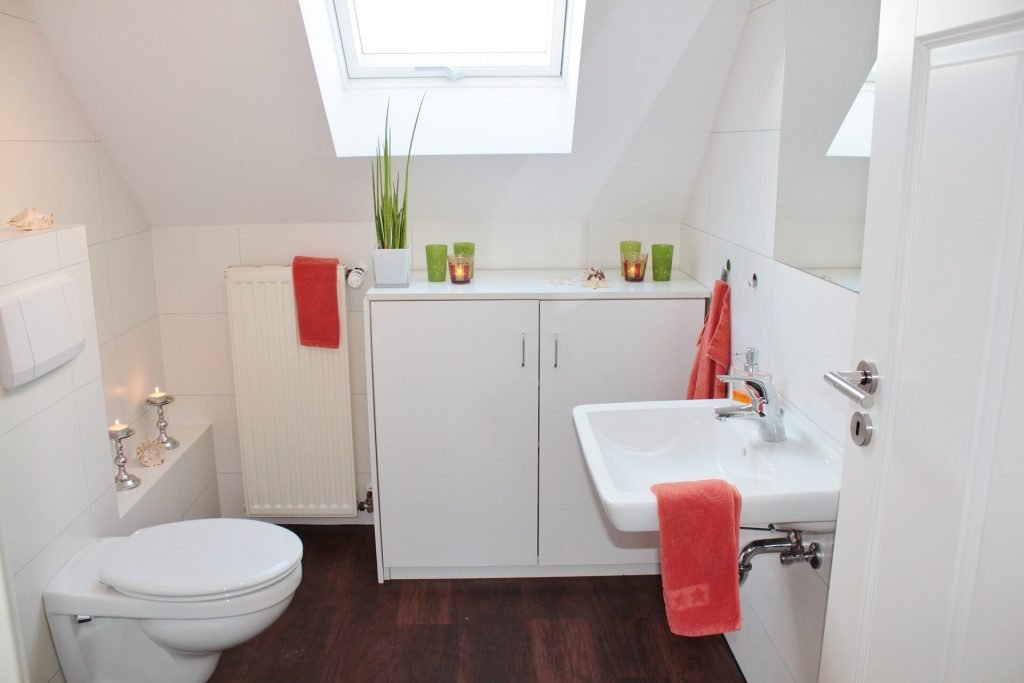Walk-In Shower vs. Traditional Shower-Tub Combo: Which is The Best for You?
Are you thinking about remodeling your bathroom and can’t decide between a walk-in shower and a traditional shower-tub combo? You’re not alone!

Are you thinking about remodeling your bathroom and can’t decide between a walk-in shower and a traditional shower-tub combo? You’re not alone! This decision can feel overwhelming, but don’t worry—we’ve covered you. Let’s dive into the pros and cons of each option, share some real-life examples, and help you make a choice that suits your lifestyle and needs.
Table of Contents
What is a Walk-In Shower?
Definition
A walk-in shower is a type of shower that does not require a door or curtain to enter. It is typically flush with the bathroom floor, making it easily accessible. Walk-in showers often feature glass panels and minimalistic fixtures, creating a sleek and modern appearance. They are designed to be both functional and aesthetically pleasing, often found in high-end homes and luxury hotels.
Background
Walk-in showers are increasingly popular for their modern look and practicality. These showers are designed without doors or curtains, providing an open and accessible space. They can be customized to fit any bathroom style and size, making them a versatile choice for many homeowners.
What is a Traditional Shower-Tub Combo?
Definition
A traditional shower-tub combo is a bathroom fixture that combines a bathtub and a shower into a single unit. This design is particularly popular in family home with kids, as it provides the functionality of both a shower and a bath.
Background
Traditional shower-tub combos are popular primarily because they offer versatility and practicality in bathroom design. They cater to different preferences and needs, allowing quick showers and relaxing baths within the same space. This dual functionality makes them an ideal choice for families with varying bathing preferences and is especially useful in homes with limited bathroom space.
Why Consider Walk-In Showers?
The Benefit of Walk-In Showers
Imagine this: You step into your bathroom, and there’s no tub to climb over, no curtain to wrestle with—just a seamless, open space that feels like a spa. That’s the allure of a walk-in shower.
- Accessibility: For anyone with mobility issues or planning to age in place, walk-in showers are a game-changer. Picture your grandma easily walking into the shower without the fear of tripping over a tub edge. It’s not just convenient; it’s safer. This is why accessibility is such a crucial benefit.
- Modern Aesthetics: Walk-in showers can transform a bathroom into a sleek, modern retreat. If you’re someone who loves the look of clean lines and minimalism, this is for you. Think of the bathrooms in high-end hotels—that’s the vibe a walk-in shower can bring to your home. Modern walk-in shower designs offer endless possibilities.
- Open-Up Space: These showers can be designed to fit snugly into corners, creating a more expansive and airier feel. By eliminating the need for bulky shower doors or curtains, it allows for a seamless transition between different areas of the bathroom. Especially when considering small bathrooms, a walk-in shower makes the room appear larger and less cluttered.
- Easy Maintenance: Tired of scrubbing grout and dealing with mold in your current shower? Walk-in showers are easier to clean because they have fewer nooks and crannies. A quick wipe-down, and you’re done. Walk-in shower maintenance is straightforward and less time-consuming.
- Customization: There are endless design possibilities, from frameless glass enclosures to intricate tile patterns. Walk-in showers can be tailored to fit various styles and preferences, offering features like rainfall showerheads, built-in benches, and storage niches. Walk-in shower ideas can range from simple to luxurious, depending on your taste and budget.
Challenges with Walk-In Showers
- Cost: The initial investment can be higher compared to a traditional shower-tub combo. Between custom designs and quality materials, you might spend anywhere from $5,000 to $15,000. Understanding the cost of walk-in shower installations is crucial for budgeting.
- Water Containment: Without doors or curtains, water can splash out. Remember the time when you had to mop up puddles after a shower, you know how annoying this can be. Effective drainage and strategic showerhead placement are crucial.
- Privacy and Temperature Control: The open design can feel less private and might be draftier, especially in colder climates. You might need to invest in heated floors or additional heating solutions to keep the space cozy.
- Ventilation: The open nature of walk-in showers can lead to increased moisture levels in the bathroom. Proper ventilation is essential to prevent mold and mildew growth, which can pose health risks and damage the bathroom walls and floor. Installing an exhaust fan specifically designed for bathrooms is crucial to ensure adequate ventilation and prevent moisture buildup.
Why Consider Traditional Shower-Tub Combos?
There are several benefits to having traditional shower-tub combos. Traditional shower-tub combos provide the perfect solution for those who want to enjoy the luxury of a soothing bath, while also having the convenience of a quick shower when needed. Whether it’s to unwind after a hectic day or to simply indulge in some self-care, a warm bath in a shower-tub combo offers the best of both worlds.
The Benefit of Traditional Shower-Tub Combos
- Versatility: These combos are perfect for families, especially those with young children. Bathtime becomes a fun, splashy adventure instead of a chore. Plus, you still have the convenience of a quick shower for busy mornings. This versatility is a significant advantage over walk-in showers.
- Cost-Effective: If you’re on a budget, traditional showers are usually cheaper to install. You’re looking at a range of $1,200 to $3,000, which is much more budget-friendly.
- Water Containment: Tubs are great at keeping water where it belongs. No need to worry about mopping up after every shower, making it easier to keep your bathroom floor dry.
- Classic Choice: Homes with traditional showers can be more appealing than walk-in showers, especially for families. It’s a classic choice that meets diverse needs and preferences.
Challenges with Traditional Shower-Tub Combos
- Accessibility Issues: Stepping over the high side of a tub can be challenging for elderly individuals or those with mobility impairments, increasing the risk of accidents.
- Space Requirements: Traditional showers can take up more space, which might make a small bathroom feel cramped.
- Maintenance: The enclosed design with grout lines and edges can be harder to clean, leading to potential mold and mildew buildup over time.
Comparing Walk-In Showers and Traditional Shower-Tub Combos
Walk-in showers and traditional shower-tub combos are two popular options for bathroom renovations. While both options have their advantages and disadvantages, it ultimately comes down to personal preference and the specific needs of the homeowner. Here are some factors to consider when comparing walk-in showers and traditional showers:
Functionality and Use
When it comes to functionality, walk-in showers excel in accessibility and ease of use. They are ideal for individuals with mobility issues and are easier to enter and exit. However, they lack the versatility of a traditional shower-tub combo, which allows for bathing and showering. For families with young children, the ability to bathe kids in a tub can be a significant advantage.
Design and Aesthetics
Walk-in showers are known for their sleek, modern design that can make a bathroom feel more spacious and contemporary. They often feature clean lines, glass panels, and minimalistic fixtures, creating a luxurious look. In contrast, traditional showers have a more classic appearance and can be designed to fit various styles, from vintage to modern. The bathtub element can add a touch of coziness and nostalgia to the bathroom.
Maintenance and Cleaning
Walk-in showers are generally easier to clean due to their minimalistic design and lack of grout lines and crevices. Traditional showers, with their combination of a tub and shower, can require more effort to keep clean, particularly in the areas where the tub meets the walls and around the edges of the shower curtain or glass doors.
Installation and Cost
The cost and complexity of installation can vary significantly between the two options. Walk-in showers often require more extensive remodeling, including changes to plumbing and flooring. This can result in higher installation costs. On the other hand, traditional showers are usually easier and less expensive to install, especially if you are simply replacing an existing unit.
Safety and Accessibility
Safety is a critical consideration, especially for elderly individuals or those with mobility issues. Walk-in showers provide easy access and reduce the risk of tripping, making them a safer option. Traditional showers, with their higher tub walls, can pose a challenge and increase the risk of accidents. Adding safety features like grab bars and non-slip mats can help mitigate these risks.
Cost Comparison
Choosing between a walk-in shower and a traditional shower-tub combo often comes down to cost. Let’s break down the typical expenses associated with each option to give you a clearer picture.
Walk-In Shower Costs
- Basic 5×5 Foot Tile Walk-In Shower: Expect to pay between $2,000 and $4,000. This covers the basics like standard tiles, a single showerhead, and minimal customization.
- Medium 6×4 Foot Tile Walk-In Shower: Costs can range from $4,000 to $8,000. This site offers more flexibility in design and allows for additional features like a built-in bench or multiple showerheads.
- Large 6×6 Foot Tile Walk-In Shower with Bench: For a more luxurious experience, you might spend between $6,000 and $12,000. This includes premium materials, a seating area, and advanced features like rainfall showerheads.
- High-End Large Walk-In Shower: If you want to go all out, prices can soar from $10,000 to $30,000 or more. High-end designs might feature intricate tile work, frameless glass enclosures, body sprays, and smart technology like digital controls.
Factors affecting the cost of walk-in showers include:
- Size: Larger showers require more materials and labor.
- Materials: Choices like marble, high-end tiles, or custom glass can significantly increase costs.
- Special Features: Extras like body jets, steam systems, and built-in seating add to the expense.
- Labor: Professional installation, especially for complex designs, can be costly.
Traditional Shower Costs
- Standard Tub/Shower Combo: Installing a basic combo unit typically costs between $1,200 and $3,000. This includes a standard tub, a basic showerhead, and a standard tiling or enclosure.
- High-End Shower/Tub Combo: For a more luxurious setup, prices can go up to $5,000. This might include a whirlpool tub, premium fixtures, and upgraded tiling or surround.
Factors affecting the cost of traditional showers include:
- Type of Tub: Basic fiberglass tubs are cheaper, while cast iron or whirlpool tubs cost more.
- Fixtures and Features: Higher-end showerheads, faucets, and custom enclosures can increase the price.
- Installation: While generally simpler than walk-in showers, complex installations or retrofitting older bathrooms can add to the cost.
Making the Right Choice
When to Choose Walk-In Showers
- Small Space: Ideal for smaller bathrooms where space is a constraint.
- High Accessibility: Perfect for individuals with mobility issues or for aging in place.
- Modern Look: Preferred for a modern, sleek look.
- Easy Maintenance: Easier to clean and maintain with fewer crevices and grout lines.
When to Choose Traditional Shower-Tub Combos
- More Functions: Offers both showering and bathing options, suitable for families.
- Affordable: Generally, it is more budget-friendly to install.
- Large Space: Better for homes with ample bathroom space or secondary bathrooms.
- Classic Choice: Loved by many and more appealing to a wider range of people.
Conclusion
Choosing between a walk-in shower and a traditional shower-tub combo depends on your needs, preferences, and budget. Walk-in showers offer modern aesthetics, accessibility, and ease of maintenance, while traditional showers provide versatility, cost-effectiveness, and broader appeal for resale.
Think about your daily routine, your family’s needs, and how you envision using your bathroom. By weighing the pros and cons of each option, you can create a bathroom that not only meets your needs but also enhances your home’s functionality and style.
FAQ
Which One is Better for the Elderly, Walk-in Showers or Traditional Showers?
Walk-in showers offer several benefits for seniors, including increased safety and accessibility. These showers eliminate the need to step over a high threshold, reducing the risk of slips and falls. They also provide ample space for mobility aids such as walkers or wheelchairs, making it easier for seniors with limited mobility to bathe independently. Additionally, walk-in showers can be equipped with grab bars and non-slip flooring to enhance safety. The open design of walk-in showers also allows for easy access for caregivers or family members who may need to assist with bathing. Overall, walk-in showers provide a practical and convenient bathing solution for seniors, promoting independence and reducing the risk of accidents in the bathroom.
Do You Need Shower Curtains for Walk-In Showers?
Shower curtains are not typically required for walk-in showers due to their open design. However, if you prefer added privacy or want to prevent water from splashing outside the shower area, you can install a curtain. Some homeowners opt for a half-glass panel combined with a curtain to achieve the best of both worlds—maintaining the open feel while containing water and providing privacy when needed.
How Do You Prepare for a Walk-In Shower?
Preparing for a walk-in shower involves several steps:
- Assess Your Space: Determine if your bathroom has enough space for a walk-in shower. Consider the layout and whether structural changes are needed.
- Plan the Design: Choose the materials, fixtures, and features you want. Think about the type of tiles, showerheads, and any additional elements like benches or niches.
- Budget: Understand the costs involved, including materials and labor. Set a budget that covers all aspects of the installation.
- Hire Professionals: Work with a reputable contractor who has experience with walk-in showers. Ensure they understand your vision and can execute the design correctly.
- Ensure Proper Ventilation: Plan for adequate ventilation to prevent moisture buildup and mold growth. Installing an exhaust fan can help maintain a dry and healthy bathroom environment.
How to Clean a Walk-In Shower?
Cleaning a walk-in shower is relatively straightforward:
- Daily Maintenance: After each use, wipe down the glass panels and tiles with a squeegee to prevent water spots and soap scum buildup.
- Weekly Cleaning: Use a mild bathroom cleaner to scrub the tiles and fixtures. Pay special attention to the grout lines and any corners where mold and mildew might develop.
- Deep Cleaning: Once a month, perform a deep clean. Use a mixture of baking soda and vinegar to clean stubborn stains and disinfect the shower area. Rinse thoroughly with water.
- Preventive Measures: Keep the shower dry when not in use by leaving the door or curtain open, allowing airflow to reduce moisture. Using a daily shower spray can also help keep the area clean.






